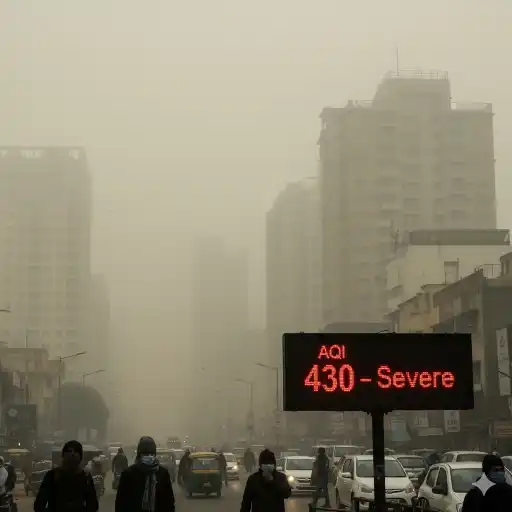As temperatures continue to fall across northern India, the air quality in several cities has sharply declined. On Thursday, Indian cities filled nearly all of the top 40 spots on the global list of most polluted cities, though Delhi, unusually, did not make the top ten.

Rajasthan Tops the Pollution Chart
The worst air quality worldwide was recorded in Sri Ganganagar, Rajasthan, where the Air Quality Index (AQI) touched a staggering 830 at 8:30 am, according to data from aqi.in. Siwani in Haryana followed with an AQI of 676, placing it second on the global chart.
Delhi Still in the ‘Severe’ Zone
Delhi ranked 13th on Thursday morning, with an AQI of 433, a level considered ‘severe’. Despite the city’s recent attempt at artificial rain, the improvement has been negligible, and pollution levels remain hazardous.
Top 10 Most Polluted Cities
- Sri Ganganagar, Rajasthan – 840
- Siwani, Haryana – 644
- Abohar, Punjab – 634
- Hisar, Haryana – 477
- Churu, Rajasthan – 456
- Charkhi Dadri, Haryana – 448
- Rohtak, Haryana – 444
- Nangli Bahrampur, Uttar Pradesh – 438
- Bhiwani, Haryana – 437
- Sasroli, Haryana – 433
Experts Question Artificial Rain Strategy
Environmentalists say Delhi’s cloud-seeding experiment might bring temporary relief but cannot solve the deeper issues, unchecked emissions, construction dust, and vehicular pollution, that keep the capital trapped in a toxic haze each winter.
Understanding AQI Levels
The Air Quality Index classifies air conditions as:
- Good (0–50)
- Satisfactory (51–100)
- Moderately Polluted (101–200)
- Poor (201–300)
- Very Poor (301–400)
- Severe (401–500)
Anything above 400, as seen across much of north India this week, is considered hazardous for public health.
